
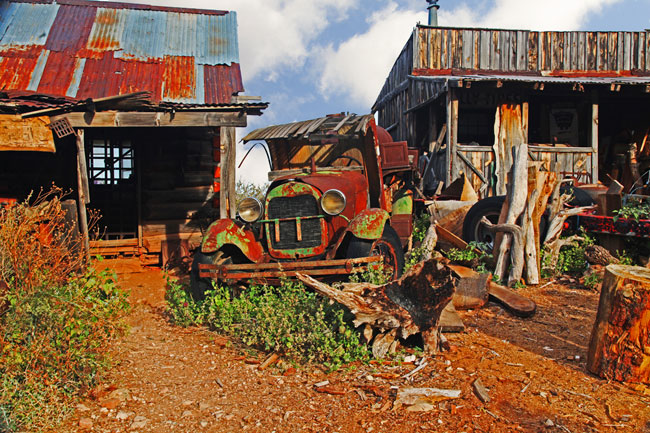

Posted by: Classic Connection



Posted by: Classic Connection

PRESS RELEASE
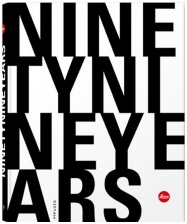
Special edition book recounts the path to becoming a living legend
Allendale, NJ (December 6, 2012) – For nearly a century, Leica cameras have captured fleeting moments and transformed them into stories brimming with the lifeblood of true human experience. The iconic image of the end of WWII as displayed by the sailor and nurse in Times Square embodies the excitement and relief felt in the U.S. on V-J Day, an immortal message not of love, but of spontaneous joie de vivre. As a stark contrast, yet just as intense, the palpable fear on Napalm Girl’s face reaches beyond the picture as she runs screaming from the wreckage that was formerly her home, announcing to the world that war also, and above all, affects the most innocent people: children. Now, the story of passion and inspiration synonymous with Leica Camera comes to life in “Ninety Nine Years Leica,” a 300-page tribute to the intensely emotive and legendary images that have become a part of our lives. It sheds an emotional spotlight on 99 years of enthusiasm for a small camera developed by Oskar Barnack in 1913.
Part history lesson, part compilation of personal anecdotes, part pop culture retrospective, “Ninety Nine Years Leica,” ushers readers into an undiscovered “Leica Universe.” A unique, fun and enlightening combination of compelling images and expressive texts tells the story behind a brand well on the way to becoming a living legend. Throughout the book, it becomes evident that not only has Leica played an active role in the world’s celebrations, sadness, relief and hope but also in the lives of its camera owners. The result of a close collaboration between Leica and the multiple-award-winning publisher 99pages – under the creative direction of AnsgarPudenz, Rainer Schillings and Till Schaffarczyk – “Ninety Nine Years Leica” takes readers on a trail of photographic discovery blazed by legendary Leica photographers such as Henri Cartier Bresson, Robert Capa and Elliott Erwitt.

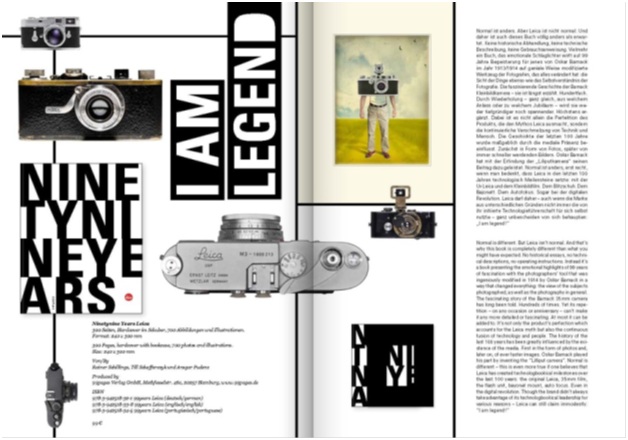
“Ninety Nine Years Leica” debuted at the photokina 2012 trade show to rave reviews. In North America, fewer than 1,500 English copies are now available exclusively through Leica Stores, Boutiques and Dealers.
Ordering it online from our store:
Ninety Nine Years Leica A company history Book NEW$130.00
More info: Product Description
Ninety Nine Years Leica
A company history, completely different:
Ninety-nine years and on the way to becoming a living legend. Throughout the history of photography, the name Leica is linked to ‘vision and innovation’. Leica has not only made significant contributions in technical terms, but has influenced the content of photography as we know it. The new book, ‘Ninety Nine Years Leica’ by the Hamburg publisher 99pages is a fitting opulent tribute to this fact. After reading through its 300 pages, it is impossible to overlook that Leica is truly different and continues to call the photographic and intellectual shots. The book is neither a corporate chronology nor an album; it does not provide technical details, instructions nor
statistics. It directs an emotional spotlight on 99 years of passion and enthusiasm for a small camera developed by Oskar Barnack in 1913/14. The book is not a tribute to the perfection of a product, but to the intensely emotive and legendary images that have been a part of our lives for almost a century.
Legendary cameras, inventors and innovators, great photographers and collages describe Leica and its undying passion for technical innovation and the art of capturing life and the world around us in pictures.
In close collaboration with Leica, the multiple-award-winning publisher 99pages – under the creative direction of AnsgarPudenz, Rainer Schillings and Till Schaffarczyk – has successfully combined images with informative, expressive texts. This anniversary edition is as unique as Leica itself.
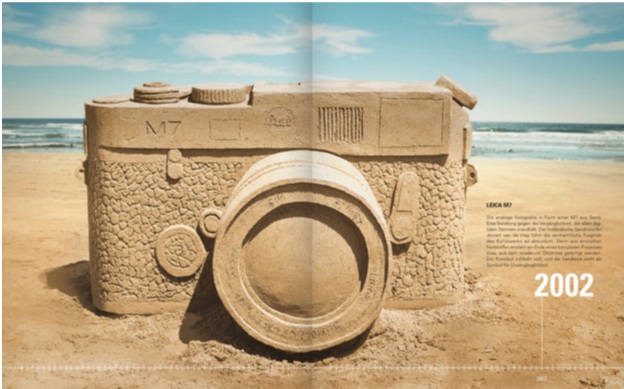
Posted by: Classic Connection
I’ve been a devoted Leica enthusiast for the last 30 years – starting off with a classic IIIc Sharksin when I was 16, and have used just about every model since (or so it seems!).
Early last year I took the plunge into the world of Leica digital and bought myself an M9. The latest digital technology wrapped around a traditional M body was a real attraction for me, not to mention the ability to use both modern and vintage lenses. As a result, the goal was for the M9 to replace my M-series and screw mount film cameras.
I quickly found out that the M9 was also an ideal traveling companion. The camera turned out to be quite dependable, and I never gave a backup body a second thought. Whether I was exploring Europe or North America, the M9 inspired the confidence that I’d get the best images, and worked every day, every time.

In September of this year my wife and I traveled through parts of Arizona and New Mexico. We thought we’d see the countryside a bit differently this time around, so we rented an old Airstream trailer and a Chevy Suburban from a fellow in Phoenix and hit the dusty trail.
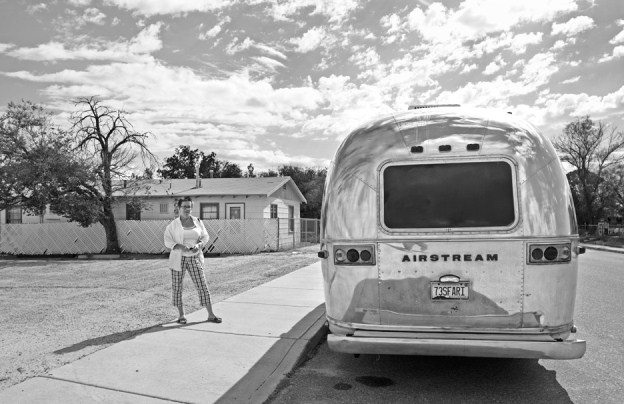

As I’ve normally shot our vacations photos in black and white, this trip was no exception. It was only natural, given much of the subject matter we encountered – amazing Southwest landscapes, historic sites and of course, Route 66. My method was to set the camera to shoot both DNG and JPEG basic, with the colour saturation set to black and white. This made it helpful for me to ‘visualize’ the scenes in black and white.
A few things I learned while traveling with this great camera:
i) Bring a good dust blower. One thing that I didn’t have with me was a good blower to get rid of dust on the sensor. This wasn’t so much of a problem during the trip, but later when I was working on the photos at home. Bottom line, more dust = more time in front of the computer;
ii) Bring an extra battery and the charger. I don’t know if it’s just me, but I find that the M9’s battery doesn’t last as long as I’d like. So to avoid being caught on a day hike with a dead battery, I made sure to have a second battery and to keep them both fully charged;
iii) Be sure to have plenty of memory cards! On this 10-day trip I had six 8GB cards, so I never had to worry about running short of memory;
iv) Travel light! One of the dangers of travel is the temptation to take too much equipment. I’ve definitely learned this the hard way (think sore shoulders and a stiff back), and have tried to become a ‘minimalist’ traveler, or at least my interpretation of it! Along with my M9 body, I brought 4 lenses – my 50/2 Summicron, 35/1.7 Voigtlander, 21/4 Voigtlander and a 75/2.5 Summarit. I managed to put all of the lenses to use, and never felt overburdened. This made for a much more comfortable traveling experience, and I was able to truly focus upon the images and not so much the equipment. Oh yeah, and have a good time too!
My lens of choice during this trip was the 50/2 Summicron – for me this provided the most versatility due to its angle of view, its f/2 aperture, and my confidence in its optical abilities throughout the range.
The light in this region of the United States is incredible – crystal-clear skies, dramatic shadows, and it presents the photographer to make great photos at almost any time of the day. This can present a bit of a challenge to the photographer, particularly due to the contrasty lighting conditions. As far as metering goes for most of the photos, I pretty well exposed right down the middle and the camera took care of the rest. With the M9, I’ve never found it advantageous to under or over expose. As far as that camera goes (and many others I’ve used), proper exposure was key.

For me, the digital M represents the highest expression of Leica’s commitment to their heritage and tradition while at the same time acknowledging the inevitable technological progress that is permeating today’s photography. I can’t wait for our next traveling adventure!
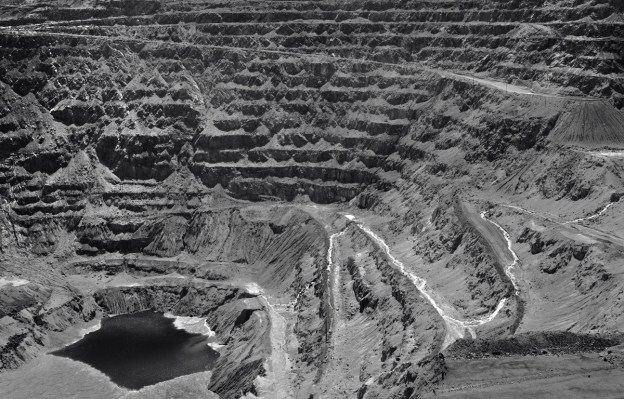
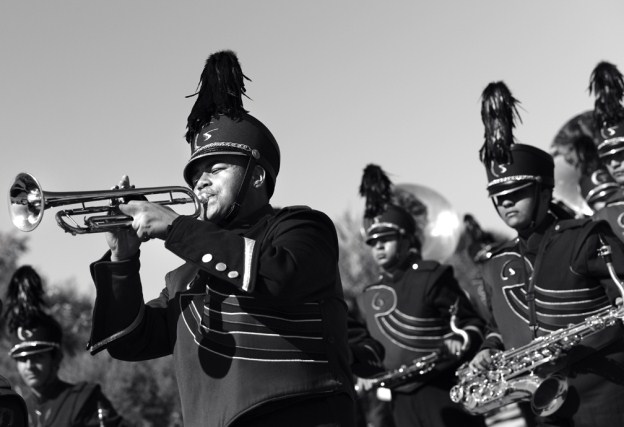

Vince Lupo has been taking photos since he was 12 years old. Originally from Toronto, Ontario, Canada, Vince has a Bachelor of Applied Arts degree from Ryerson Polytechnic University in Toronto, and a Master of Fine Arts degree from the Savannah College of Art and Design in Savannah, Georgia. He is also co-owner of Direction One, Inc., a commercial photography firm in Baltimore, Maryland. He specializes in architectural interiors, food, people, and of course, Leica! He can be reached through his website, http://www.directiononeinc.com , or email vlupo@directiononeinc.com .
NY Times Photo Info
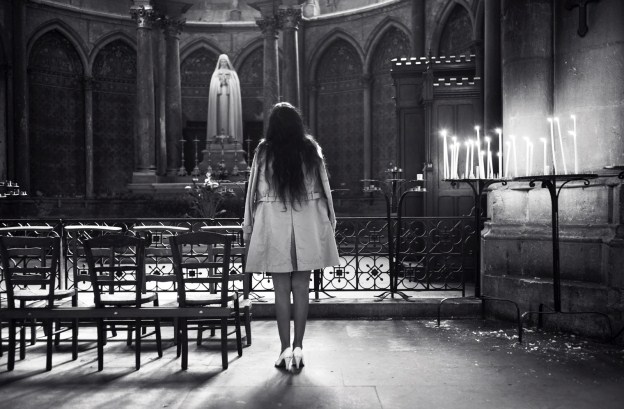
While visiting the Notre-Dame Cathedral in Reims, France, I sat on a stone bench across from this little prayer area. After a couple of minutes, this lady walked up to the little altar. She just stood there, motionless. Her hair, her dress, her white high heels all seemed to be such a contrast with the rest of the environment. I took about four shots before she walked away. I never did see her face.
Taken with the M9 with a 35/1.7 Voigtlander lens, ISO 400, 1/15th @ f/2. This photo appeared in late 2012 in the New York Times.
Posted by: Classic Connection
The Latest Leica M-E camera (now in stock) is a 18.0-Megapixels Full Frame CCD Sensor Digital Rangefinder Camera that fits Leica M-Mount Lenses. All Metal Die-Cast Magnesium Body, Anthracite Gray Finish with Leather Trim, It features Manual Focus with Optical Viewfinder, 2.5″ TFT LCD with 230,000 Pixels, ISO Sensitivity Up to 2500, Low-Noise Shutter, Included Adobe Lightroom Software. The camera measures (W x D x H) approx. 139 x 37 x 80 mm(5,5 x 1,7 x 3,1 in.) and weight 585 g (20.6 oz).

Same picture quality like the Leica M9/P cameras, for MUCH less money. Plus, the removal of the low-pass filter actually enhances detail and renders a more natural image. Lack of a “Bright Line Preview Selector” doesn’t affect any of the qualities of the M9/P or M-E images. The Anthracite Graytop and base camera is handsome and distinctive, A perfect well priced camera.
Click on the link to order the:
The M-E Digital Rangefinder Camera from Leica is a full frame, interchangeable lens camera that embodies the notion that less is more. By concentrating on essential photographic functions, the M-E produces high quality images in a fast and stealthy manner. The camera houses a full frame (36 x 24 mm) sensor but retains a compact, durable and well-designed form.
The 18MP CCD sensor in full 35mm format offers high-resolution imaging and the omission of the sensor’s low-pass filter creates photos with fine details and an increased visual impact. The sensor matches well with the compact M-system and M-series lenses, giving uniform exposure across the entire sensor. The camera’s compatibility with the full line of superb Leica M-series lenses provides flexibility in shooting and sharp imagery.
By declining to incorporate features such as Live View and Video functions, the M-E frees itself to perfect only those functions that create a better photographic image. Its fast and accurate manual focusing is achieved via the optical viewfinder/rangefinder and the smooth, exact focusing ring of a Leica lens. Shutter speeds from bulb mode through 1/4000th of seconds can be set manually or automatically determined by the camera. The shutter mechanism is a closed type focal plane shutter with external cocking mechanics and provides a quiet and smooth action.
A 2.5″ TFT LCD screen with 230,000 pixels offers clear image playback and menu control and the camera body itself is an all-metal casing made of die-cast magnesium with an attractive anthracite-gray finish and a real leather wrap which provides a good grip as well as good looks. A hot shoe mount is available for optional flash attachment.
This is an ideal camera for those interested in a pure photographic system which produces uncompromised image quality.
18MP Full-frame CCD Sensor
The highly light sensitive full-frame CCD sensor is ideal for the compact nature of the M-E and the high quality Leica M-series lenses. Uniform light exposure from corner to corner of the sensor provides sharp, high quality images.
Omitted Low-pass Filter
The omission of the otherwise usual low-pass filter ensures that images possess fine details and a particularly natural visual impact.
Optical Viewfinder/Rangefinder
Manual focus is provided through the large, clear, bright-line rangefinder with 0.68x magnification and automatic parallax compensation. The viewfinder’s frame lines match the image sensor size at 3.2 feet (1 m). Split or superimposed image rangefinder is shown as a bright field in the center of the viewfinder image. The eyepiece is adjusted to -0.5 dpt. An LED display is visible in the optical viewfinder showing auto shutter speeds and exposure correction warnings.
Exposure
Exposure metering is Through the Lens (TTL) metering, center-weighted with variable aperture. There are two exposure modes: Automatic shutter speed (Aperture Priority A-mode) and Manual Exposure (M-mode). Exposure compensation is -3 EV to +3 EV in 1/3 stops.
Handsome, Durable Design
Milled brass top cover with all metal, magnesium body. Anthracite-gray finish and black leather trim.
Image File Format and Size
The M-E shoots in both DNG (RAW data uncompressed or nonlinear compressed) and JPEG formats. DNG file size is 18 MB (compressed) and 36 MB (uncompressed). Exact JPEG file sizes depend on resolution and image content.
User Profiles
Up to four sets of camera and exposure settings can be saved under a user-selected profile name and rapidly retrieved whenever required.
Menu Languages
English, German, French, Italian, Spanish, Russian, Japanese, Traditional Chinese, Simplified Chinese
Accessories
All optional accessories compatible with the Leica M9/M9-P digital camera will fit the Leica M-E.
Software
A free Adobe Lightroom software download is included.
Specification
Lens Mount Leica M Mount Camera Format Full-Frame Pixels Actual: 18.5 Megapixel
Effective: 18 Megapixel Max Resolution 18MP: 5270 x 3516
Other Resolutions 18MP: 5212 x 3472
10MP: 3840 x 2592
4.5MP: 2592 x 1728
2MP: 1728 x 1152
1MP: 1280 x 846
Sensor Type / Size CCD, 35.8 x 23.9 mm
File Formats Still Images: DNG, JPEG
Dust Reduction System Y
Noise Reduction No
Memory Card Type SD
SDHC
Viewfinder/Display
Viewfinder Type Optical, LCD Display
Viewfinder Magnification Approx. 0.68x
Diopter Adjustment – 3 to +3 m
Display Screen 2.5″ Rear Screen LCD (230000)
Screen Coverage 100%
Live View No
Exposure Control
ISO Sensitivity Auto, 160-2500 (Extended Mode: 80-)
Shutter 240 – 1/4000 seconds
Metering Method Center-weighted average metering
Exposure Modes Modes: Aperture Priority, Manual
Compensation: -3 EV to +3 EV (in 1/3 EV steps)
White Balance Modes Auto, Cloudy, Daylight, Flash, Fluorescent (Natural White), Fluorescent (White), Kelvin, Manual, Shade, Tungsten
Burst Rate Up to 2 fps at 18 MP
Summary – The latest ME camera from Leica Co. is well priced , keeping the same quality of the Leica M9 and Leica M9-P cameras allowing new users to join the wonderful Leica rangefinder system for much less… ! The great Leica optic could be used with the Leica ME camera, Compact Asph. lenses like the Leica 28/2,8 Elamrit-M Asph six bit cat #11606 New
Or the Leica 35/ 2.0 Summicron-M ASPH. black (E39) #11879 six bit New lenses
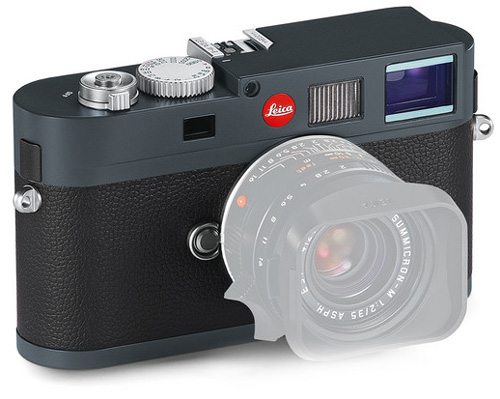
Posted by: Classic Connection
Leica D-LUX 6 Black NEW Camera$799
Leica V-4 Digital Camera New$899
Leica M black Digital Camera New $6,950
The Leica M. As the first M camera to implement a newly designed and constructed CMOS image sensor and tofeature additional focusing methods and functions like Live View and Full HD video capability, it is the most versatilemodel ever in the history of Leica rangefinder cameras and sets entirely new standards. It unites the numerousadvantages of innovative digital technology with a rangefinder technology that has been continuously perfected overdecades. At the same time, it remains true to the legendary values of the M-System, while expanding the opportunitiesoffered by rangefinder photography – and, for the first time, offers compatibility with Leica R legacy lenses.
LEICA MAX CMOS SENSOR
The new Leica MAX 24MP CMOS sensor was developed exclusively for the new Leica M, resulting in outstanding imagequality even at high ISO’s for available light photography in difficult lighting situations. This specially designed sensorarchitecture helps to achieve a perfect match between the camera and the Leica M and R lenses.▸ Extremely high image quality at all ISO settings and with all Leica M and R lenses.
LIVE VIEW AND ELECTRONIC VIEWFINDER. / FOCUS PEAKING. / LEICA R ADAPTER M. / MULTI-PATTERN AND SPOT EXPOSURE METERING. /FULL HD VIDEO CAPTURE. / SPLASH WATER PROTECTED BODY. / LEICA MAESTRO IMAGE PROCESSOR. /
LEICA M-E black rangefinder digital camera New$5,450.00
Leica S (Type 006) 37.5 MP Digital Camera New USA$21,950.00
NEW Leica S (Type 006) 37.5 MP 7500 x 5000 pixel Sensor resolution Digital Camera New USA Cat #10803
We proudly present a new innovation by Leica Camera, the new Leica S.
The next generation in the successful line, the Leica S offers increased imaging quality and sensor sensitivity,
predictive autofocus, higher speed and improved handling. Numerous enhanced functions contribute to the camera’s
further acceleration and greater security of the professional photographic workflow.
BENEFITS AT A GLANCE
▸ The smallest, fastest and most versatile medium format camera on the market
▸ Outstanding image quality with new, improved imaging system components
▸ Comprehensive portfolio of excellent Leica S lenses
▸ Simple operation thanks to a refined, intuitive, joystick-based control concept
Optimum image quality
The Leica S features a specially designed and more efficient autofocus system. The sensitivity range of its sensor has also been increased: its lowest sensitivity of ISO 100 allows longer working at maximum aperture in bright conditions and the highest setting of ISO 1600 ensures perfect exposures under even the most adverse lighting conditions. Ultimate imaging quality is guaranteed.
Fast and efficient
The 2 GB buffer memory plays a significant role in the increased image-processing speed. It also allows extended sequences to be shot in continuous-shooting mode. The Leica S can capture up to 32 consecutive images in DNG format with lossless compression at a maximum rate of 1.5 frames per second. In JPEG-only mode, the number of images in sequence is limited only by memory card capacity.
Intuitive handling
The intuitive handling concept of the new Leica S gets by with a minimum of control elements. All functions are displayed in a clear and simple layout on the monitor screen and settings are entered with four soft keys and a click wheel. Brand new features of the control concept are a five-way switch in the form of a mini-joystick and an even clearer layout of the user interface.
Integrated GPS
The Leica S is the only professional DSLR to feature an integrated GPS module. This allows the registration of exposure location details in the EXIF data of each image file. Local times and time zones are automatically synchronised. The software provided allows the location and capture time of each image to be plotted on a map.
Informative display
With 920,000 pixels covering the 16.7 million colors of the sRGBcolor space, the 3″ TFT monitor enables bright and clear image viewing and assessment of sharpness, even in adverse lighting conditions. Whenever required, photographers can also superimpose exposure parameters and a transparent brightness or RGB histogram on the monitor image.
Finally tuned ergonomics
Although a heavyweight in terms of technology, the new Leica is a featherweight in the hand. Its compact construction, ideal balance and a comparatively low weight of only 1,260 g are advantages that, along with the ergonomics of the handgrip, the grip characteristics of its armoring and ideal placement of all its controls, guarantee fatigue-free photography.
Dual memory card support
The Leica S has two memory card slots for writing data simultaneously to CompactFlash and SD cards. The advantages: increased memory capacity and faster write speeds. The workflow also becomes easier, as DNG files for processing and JPEGs for image review can be saved separately on different cards.
Leica 24mm F/3.5 Super Elmar S ASPH Lens #11054 New$7,450.00
New Item, Available for pre-order Expected availability: November 01 2012
We proudly present a new lens by Leica Camera, the Leica Super-Elmar-S 24mm f3.5 ASPH.With the Leica Pro format of the S-System (30x45mm), this high-speed super-wide angle lens corresponds to a
19mm lens in the 35mm format. It is the widest medium-format lens on the market. With its wide viewing angle, thisstunning lens opens up a versatile range of image applications, in particular in interior, architecture and landscapephotography. At the same time, the lens is optimized for maximum contrast rendition and highest resolution from open aperture onward, and guarantees a constantly high level of quality from its closest focusing distance to infinity. The extraordinary degree of correction of this optical design is reflected, in its freedom from distortion.
BENEFITS AT A GLANCE
▸ Super-wide-angle lens with an extreme angle of view
▸ Minimal distortion
▸ Maximum contrast reproduction, and resolution at all apertures over the entire distance range providing
crisp images
▸ Brilliant, pure color reproduction
▸ Excellent stray light suppression for high-contrast images, even in backlight situations
▸ Sealed against dust and splash water.
LEICA 30-90mm f3.5-5.6 ASPH Vario-Elmar-S Cat #11058 New$9,950.00
New Item, Available for pre-order Expected availability: November 2012
We proudly present a new lens by Leica Camera, the Leica Vario-Elmar-S 30-90mm f3.5-5.6 ASPH.
With the Leica Pro format of the S-System (30x45mm), this compact standard zoom lens corresponds to a 24-72mm
lens in 35mm systems. It is the only 3-times zoom lens in the digital medium-format market.
The Leica Vario-Elmar-S 30-90mm f3.5-5.6 ASPH.combines a very versatile range of focal lengths, compact
dimensions and low weight with excellent image quality over the entire focal length range, from infinity to close-up, at
widest aperture and stopped down. Its performance makes the lens a full-fledged alternative to fixed focal-length
lenses. The lens is primarily characterized by its compactness and light-weight; it boosting the photographer’s
flexibility, particularly in travel, fashion and photo journalism.
BENEFITS AT A GLANCE
▸ Versatile, compact standard zoom lens
▸ Maximum contrast reproduction, and highest resolution at all apertures over the entire distance range provide crispimages
▸ Brilliant, pure color reproduction
▸ Compact and light weight
▸ Excellent stray light suppression for high-contrast images, even in backlight situations
▸ Sealed against dust and splash water
LEICA TS-APO-Elmar-S 120mm f5.6 ASPH. Cat #11079 New $6,950.00
New Item, Available for pre-order Expected availability: January 2013
We proudly present a new lens by Leica Camera, the Leica TS-APO-Elmar-S 1:5.6/120mm ASPH.
Similar to the movements of a view camera, the Leica TS-APO-ELMAR-S 120mm f5.6 ASPH., gives the photographer complete control over the perspective and the focal plane. The lens is characterized by an image circle increased by 153mm, which means that the lens can be shifted by up to 12 mm from the optical axis in any direction. This allows the user to change the view without changing the perspective, thus supporting, for example, product shots without irritating converging lines.
Independent of the shift, you can tilt the lens by up to 8° in any direction, thus tilting the focal plane in line with Scheimpflug’s principle.
BENEFITS AT A GLANCE
▸ Tele-tilt-shift lens for high-accuracy perspective and focus control
▸ Large tilt range for maximum depth of field (Scheimpflug principle)
▸ Parallel shift to correct converging lines
▸ Precise stitching
▸ Maximum contrast, and resolution at all apertures over the entire focusing range
▸ Brilliant, pure color reproduction
The exterior of the Leica TS-APO-Elmar-S 120mm f5.6 ASPH.is different from that of other S lenses, due to its special design as a tilt/shift lens.
The lens has a total of four rings for tilt and shift, one turn-and-slide ring each for adjusting the tilt and shift directions, and one ring each for adjusting the tilt and swing respectively. It additionally features a tripod plate with a 1/4″ and a 3/8″ thread, which allows the user to fix the lens in any orientation thanks to the rotating clamp and clamping screw.
The lens’s large image circle simultaneously supports a shift of up to 12 mm and a tilt of up to 8°. Both the tilt and the shift mechanisms rotate through 360°, so that the respective adjustments can be made in any direction and independently of one other.
Applications:
▸ Product
▸ Advertising
▸ Still-life
Scope of delivery Leica TS-APO-Elmar-S 120mm f5.6 ASPH.
Lens with lens hood, rear cap, front lens cap E95, lens pouch, manual, warranty card, test certificate
LEICA Elpro-S 180mm Cat # 16032 New$1,450.00
The close-up converter Leica Elpro-S 180mm is designed exclusively for use with the Leica APO-Elmar-S 180mm f3.5 (CS), and is screwed into the filter thread of the lens. Exposure settings are identical for the lens without the
converter. With the Leica Elpro-S 180mm fitted, you can focus in the range of 1.1 to 2.7m (3.6 – 8.8’), and achieve a maximum magnification of 1:4.5 at the minimum focusing distance. The imaging quality of the Leica Apo-Elmar -S 180mm f3.5 is maintained at all aperture and focus settings.The combination of the Leica Apo-Elmar -S 180mm f3.5 and Leica Elpro-S 180mm is ideal for beauty and close-up shots with an elaborate lighting setup.
BENEFITS AT A GLANCE
▸ Close-up converter for the Leica Apo-Elmar-S 180mm f3.5 (CS)
▸ Reduces the minimum focusing distance from 1.5m to 1.1m ( 5 – 3.6’)
▸ Magnifies the image scale from 1:7 to 1:4.5
Applications:
▸ Beauty
▸ Close-up portraits
▸ Product
Scope of delivery Leica Elpro-S 180mm.
Lens with lens hood, rear cap, front lens cap E95, lens pouch, manual, warranty card, test certificate
Technical Details
Lens type Close-up converter for Leica Apo-Elmar-S 180mm f3.5, compatible with all Leica S camera models
Optical design Number of lens elements/groups: 2/2
Focus Working range 1.1 m to 2.7 m (3.6 – 8.8’) lens range 1.5 m to infinity
Smallest object field/largest scale: approx. 159x239mm / 1:4.5
Filter mount E72
Surface finish Black anodized
Dimensions Largest diameter approx. 76mm
Weight approx. 230g (8 oz)
Posted by: Classic Connection
Shimrit Shoshan, a highly regarded up-and-coming Israeli pianist on the NYC scene, died Aug. 19 at Columbia Presbyterian Hospital in New York. The cause, according to her press representative, was cardiac arrest. She was 29.
As stated in a news release circulated today, Shoshan began playing organ and flute at age 8 and eventually matriculated at the Thelma Yellin School of the Arts (also the alma mater to young Israeli jazz greats like the Cohen siblings). She came to New York in the 2000s, studying at the City College of New York and the New School. Her teachers included Kenny Barron, Reggie Workman and Charles Tolliver. Shoshan appeared at some of the best jazz rooms in New York City, and in 2009 was a finalist in the Thelonious Monk Institute Ensemble Competition and the Mary Lou Williams Women in Jazz Competition.

Shoshan played a well-reviewed early morning set at the 2011 Winter Jazz Fest in NYC, and her self-released debut, Keep It Movin’, featured a top-notch lineup including Eric McPherson, Abraham Burton, John Hébert and Luques Curtis. After the album’s release, Shoshan explained to JT’s Aidan Levy the level of commitment a good recording requires. “It takes a long time to release something very personal to you. A lot of mental work is, am I ready to do this?” she said.
A memorial event will be held this Sunday, Aug. 26, at Smalls Jazz Club at 5 p.m. Another event is slated for Le Poisson Rouge sometime this fall.
Posted by: Classic Connection
Better News is that I have one! (Thanks to my long time “Leica pusher” and good friend Sam, here at the Classic Connection).
Caveat: I just got this, so have not employed it on a paying assignment yet, nor will I do so until I’ve played with it for some time to be sure of it. Therefore you will have to excuse the mundane “snapshots” used to illustrate the adapter in action (except the “fitness” shots used to illustrate high speed flash sync). .
Introduction to the Leica H to S mount adapter:
For those not familiar with the H to S unit recently announced by Leica, be aware that this is no typical “dumb” adapter, nor a rinky-dink third party cobbled together piece of MacGivver gear requiring you to disassemble an expensive lens. It is an extremely well made, fully functional electronic data-bus adapter that allows full use of Hasselblad H mount Leaf Shutter lenses with AF, and convenient open aperture shooting/metering … thus offering a very comprehensive line up of Hasselblad medium format focal lengths from 28mm to 300mm. This includes some focal lengths either not yet available in the S line, or ones not currently planned.

So, the S system user now can employ the current S-30mm. 35mm, 70mm, 120mm 180mm … Plus, the HCD/28mm, HCD 35-90, HC 35mm, 50mm-II, 50-110mm, 80mm, 100/2.2, 120 Macro with 1:1, 150N, 210mm, and 300mm. 16 lenses total. In addition to being a S2 shooter, I also use a Hasselblad H4D/60 and have a decent spread of the HCD and HC lenses. (the “D” in HCD means Digital design, with a slightly cropped coverage compared to the HC lenses, which are FF 645 coverage. This is of no consequence to the S2 user because the S sensor is fully covered by the HCD lenses)
When mounted to the S2, each of the H mount lenses can be used in FP mode (Focal Plane shutter down to 1/4000 shutter speed) … or CS mode (Central Shutter, a leaf shutter located in the lens, which allows flash sync down to 1/750 Shutter speed) Here are a few H lenses available for use on the S2:

Now the first question that comes to mind is why would Leica do this? They are a premiere maker of optics, and the S line-up is all ground up designs specifically made for demanding digital photography.
Well, as a working professional I can provide some over-all answers, and a few specific ones.
Generally speaking: the current S line-up, while fairly well spread out, consists of 5 basic focal lengths … however, IMO, few working photographers will spring for both the S-30 and S-35 at the price of these lenses because, while different, they are pretty close to each other. So, in effect most S2 users have 4 focal lengths to work with, which can be somewhat constricting depending on the diversity of work being done, the lens draw effect you want, and the space you may be shooting in.
Another general aspect is that all of the H lenses are Leaf Shutter optics. Important for some because high sync speeds with studio strobes is a big deal for many advanced enthusiasts using so called “strobists” techniques of off-camera lighting, and working professionals using extensive strobe systems in studio and on location. Leica has been slow to get their Leaf Shutter CS lenses to market, and even then it is still a somewhat restricted line-up of focal lengths.
High sync speeds using full power studio type strobes, or portable battery strobes, should not be confused with High Speed Sync mode (HSS) on the SF58 speed-light. SF58 HSS is accomplished by pulsing the light, which further weakens the amount of light reaching the subject, from a source that is already demure even at full power compared to the average strobe light. High speed sync with strobe lights allows the photographer to control the effect of the ambient … and even use wider apertures, or overpower the sun, or totally kill the effect of stray ambient by using down to 1/750 shutter verses the 1/125 of the S2 in focal plane shutter mode.
For example, here is a studio “fitness” shot of a figure competitor using high shutter speed sync to kill the ambient light in my studio, which is white and brightly lit by windows and a skylight … and another of the same woman outdoors using a higher sync speed to control the ambient level on a recent bright summer morning. Profoto lighting was employed in both cases.


Lastly, the H system is pretty wide spread and has been available for quite some time. However, the user of the H system is completely relegated to Leaf Shutter work, and the H cameras currently do NOT offer a focal plane option. This has restricted the H user to a top shutter speed of 1/800, and we have to employ ND filters to use faster apertures such as f/2.2 in bright ambient light. The S2 is a dual shutter camera and can do both. So, the HC and HCD lenses can be used at higher shutter speeds down to 1/4000 for the first time ever, making the S2 an attractive option for owners of a Hasselblad system.
Specifically speaking, some of the H lenses perform functions their S counterpart does not.
The HC 120/4 Macro focuses down to a 1:1 ratio, where the wonderful S-120 does 1:2. Literally, this means if you shoot a close-up, the object shot with the H macro can be captured twice as big as the same object captured by the S macro. I currently have the first version of the HD 120/4, but will be upgrading to the tweaked MK-II version soon, so it should be even better on the S2. However, that is driven more by the demands of the H4D/60 than the S2. I do not think there is enough of a difference for the S2 user, and the first version of the HC 120 Macro is fine on the S2 for those wishing to get closer.

The HCD 28 lens may be the widest lens with a Leaf Shutter that we can use on the S camera. I do not have the S-30mm to compare actual coverage, but the HCD28 is considerably wider than the S-35mm that I do have. Leica has stated that the planned S-24mm will not be available with a Central Shutter. Attached here are a few quick snaps showing the difference in coverage from the samevantage point using the HCD28 and S-35. If I ever get a chance to use a S-30mm I will compare coverage, but I suspect the HCD28 will still be a tiny bit wider.



The other specific relates to focal lengths … the jump from S-35mm to S-70mm is a fairly substantial one … filled by either Hasselblad’s HCD 35-90 Zoom, or more specifically the HC 50/3.5-II. IMO, the 35-90 zoom is a beast of a lens, and while convenient, is quite a handful. It is very good optically, but IMO defeats the S camera’s big advantage compared to other medium format cameras: size and bulk. I prefer the much smaller HC 50-II to fill the gap with an approximate 35mm field of view as measured in 35mm terms. 35mm is a focal length I use a lot with other cameras, and I relish the idea of now using it on the S2. Be aware that the newer 50-II is the one to seek. It is a substantial improvement over the previous HC 50mm. Knowing Leica folk and their optical demands, I’d suggest going for the MK-II version.


Then there is the HC 100/2.2 … not only a focal length unavailable in the S line, and fitting nicely between the S-70 and S-120mm … it also provides the fastest aperture you can shoot with an S2. This lens is renowned for its character … both it’s buttery Bokeh, and gentle roll off from in-focus to out-of-focus areas. It also happens to be wickedly sharp. Here’s a S2- 100/2.2 snap of my doggie:

For longer lens users, there is the HC210 and 300mm optics. Sorry, I sold my HC 300mm so cannot provide samples of it shot on the S2. However the HC 210 is an unsung optic that reaches out a bit more than the S-180. It also has a very nice character and used a lot by professionals to do head shots and other portraits. For such a long focal length, the HC-210/4 focuses very fast on the S2.
General notes:
Lens Profiles: distortion, vignette, and CA corrections are possible for each of the Hasselblad HCD and HC lenses. These profiles are available from Leica and can be loaded into the Adobe Light Room software. Some people have questioned why software has to be used … well, because there is no such thing as a perfect lens … and while some of the S optics get pretty close, even they benefit from software correction profiles … which are also available in Light Room under Leica Lens Corrections.
Auto Focus: So far the S2 auto focus of the HC and HCD lenses seems on par with normal use on a Hasselblad camera with two exceptions: My H4D/60 has an on-board AF assist light for use in low ambient conditions which the S2 does not; and the Hasselblad camera performs their “True Focus” function that micro-adjusts for focus shift when stopping down … something I doubt Leica was able to incorporate. For the most part, the AF was fast and accurate … more or less fast depending on which lens and what the ambient conditions were.
Color rendition: So far, I’ve noted a slightly warmer rendition between the H lenses compared to the S optics using the same camera settings. Just an ever so slight yellow as opposed to red. This is actually a bit desirable for me because it affects skin tones in a positive manner, where the cooler Leica rendition sometimes produces an ever so slight magenta cast to skin. Using manual white balance virtually eliminated this difference.
Price: This adapter is quite expensive, which most Leica users are used to. How Hasselblad users will view it depends on the degree of functionality they can get from securing a S2 and this adapter and how many H lenses they may already have. I would think that as a S2 and H4D user I’m the rare exception where the value is obvious and the price well worth it to expand both the use of the H lens system I already have, and expanding the versatility of the S2 camera I already use.
That Leica did their home work by providing profiles specific to the S sensor size, and made this a seamless, well made tool to expand the functionality of the S system is a remarkable achievement.
July 30, 2012
Marc Williams
Fotografz, LLC
www.fotografz.com
Posted by: Classic Connection
The app for the latest issue of the S-Magazine is now available on the Apple App Store.

The S-Magazine is a platform for photographers to publish their current commercial works. Photographers Beau Grealy, Jonathan Mannion, Christopher Kutner, and the newcomer duo, Kirchknopf+Grambow, show how versatile the S2 is – both on location and in the studio.
Markus Tedeskino photographed with the new central shutter for the first time, showing the creative possibilities that no other camera system currently offers. With the new S adapter H, Hasselblad‘s H lenses can now also be applied to the S2 – Thomas De Monaco tested this combination.
The iPad app and website S-League.net complement the classical magazine format and regularly present international photographers’ latest works.
Posted by: Classic Connection
The new system case will be available as of June 2012.
The Leica Case S is the professional and elegant way to store and transport the Leica S-System safely.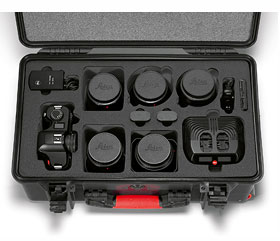
The Leica Case S provides space for following products:
_ 1x Leica S-Camera Body
_ 1x Leica Multifunction Handgrip S
_ 1x Leica Summarit-S 35mm f/2.5 ASPH.
_ 1x Leica Elmarit-S 30mm f/2.8 ASPH.
_ 1x Leica Summarit-S 70mm f/2.5 ASPH.
_ 1x Leica Apo-Macro-Summarit-S 120mm f/2.5
_ 1x Leica Apo-Elmar-S 180mm f/3.5
_ etc.

| More Information |
Posted by: Classic Connection
From October 2012 on Leica Camera will gradually expand the product range for the Leica S medium format system with five new central shutter lenses.
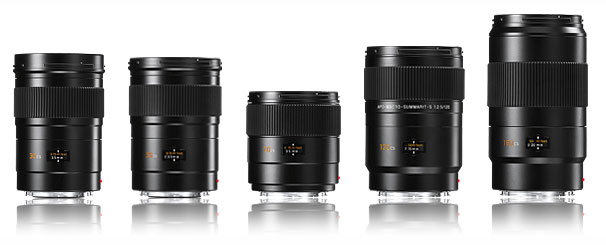
The new models are the Leica Elmarit-S 30 mm f/2.8 ASPH. and Leica Summarit-S 35 mm f/2.5 ASPH. wide-angle lenses, the Leica Summarit-S 70 mm f/2.5 ASPH. standard lens, the Leica APO-Macro-Summarit-S 120 mm f/2.5 tele-macro lens and the Leica APO-Tele-Elmar-S 180 mm f/3.5 telephoto lens, all of which will also be available in a CS version with a central shutter.
Designed and constructed exclusively by Leica, the central shutter available for all S lenses is not only especially compact and efficient, but also has a guaranteed service life of at least 100,000 shutter cycles, making it extremely reliable. First and foremost in the development of all products is the consistent dedication to creating tools to fulfil the stringent demands of professional users of the Leica S medium format system in their everyday photographic work.
The objective we pursue with the Leica S-System is to provide absolutely reliable equipment that guarantees extreme precision and a particularly long operational lifespan.
| More information | |||
| To the video |